Gravel Grids
Mu Jin Yuan Grass grids are a popular solution where there’s need to safeguard and reinforce grass surfaces or turfs.
- High performance at affordable rates
- Easy to install and lightweight
- High strength
What are Gravel Grids?
Gravel Grid are a plastic permeable paving system utilized in the reinforcement and stabilization of grass surfaces or turf surfaces. They are typically made up of plastic grids capable of interlocking and ground installed before filling with soil and grass seed or turf.
Gravel Grid also named Grass and paver driveway, gived grassed areas structural support, , promote growth of healthy flora, and allow both vehicular and foot activity. The grids uniformly disperse the weight and load, minimizing compaction and damage of the grass.
Materials Used for Grass Grids
Grass grids are commonly made of plastic materials usually high-density polyethylene, polypropylene and recycled plastics. These grids spot porous designs with an interconnection of cell structure allowing water infiltration and growth of grass.
The use of these plastic materials is for the following reasons:
- Plastic is lightweight and easy to handle
- This material can easily be shaped by cutting to fit the desired area
- The flexibility of plastic makes it tolerable to wide temperature ranges
- Plastic is easily affordable and durable with great resistance to chemicals and UV degradation.
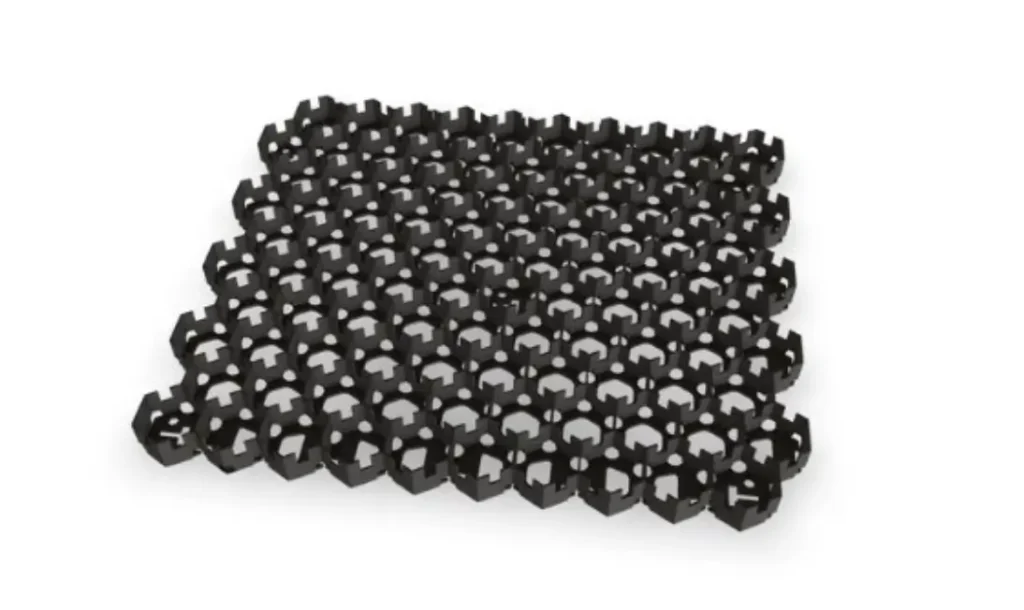
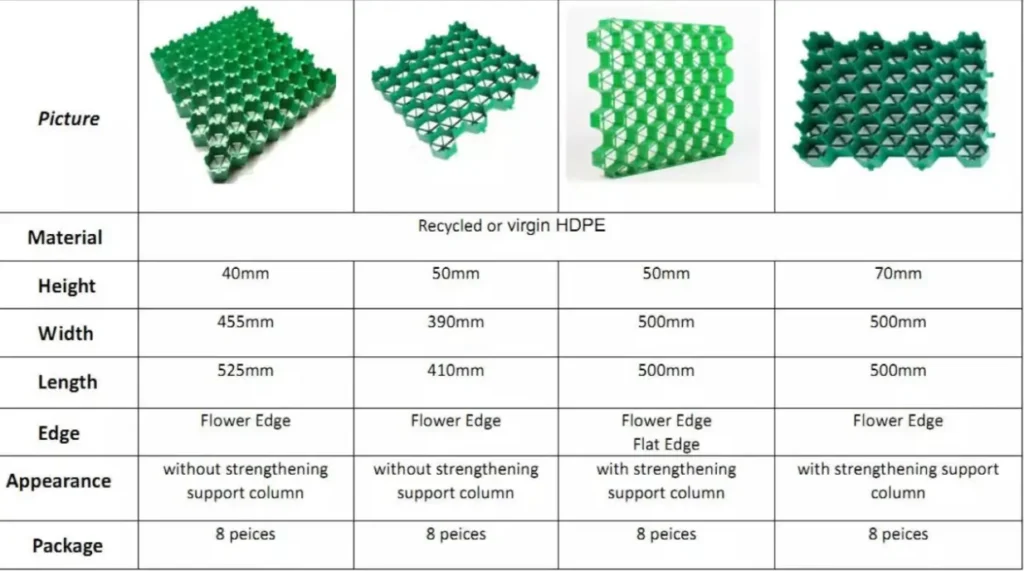
Size for Gravel Grid
The most popular Gravel Grid is divided into four types according to the different construction environments, and the different types are mainly distinguished by the size of the grid and the thickness of the grid walls.
We have professional engineers to design the construction plan and provide construction support according to your place of use, construction environment, soil hardness and soil thickness, click below to get in touch with us.
Spunbond Fabric vs Meltblown fabric
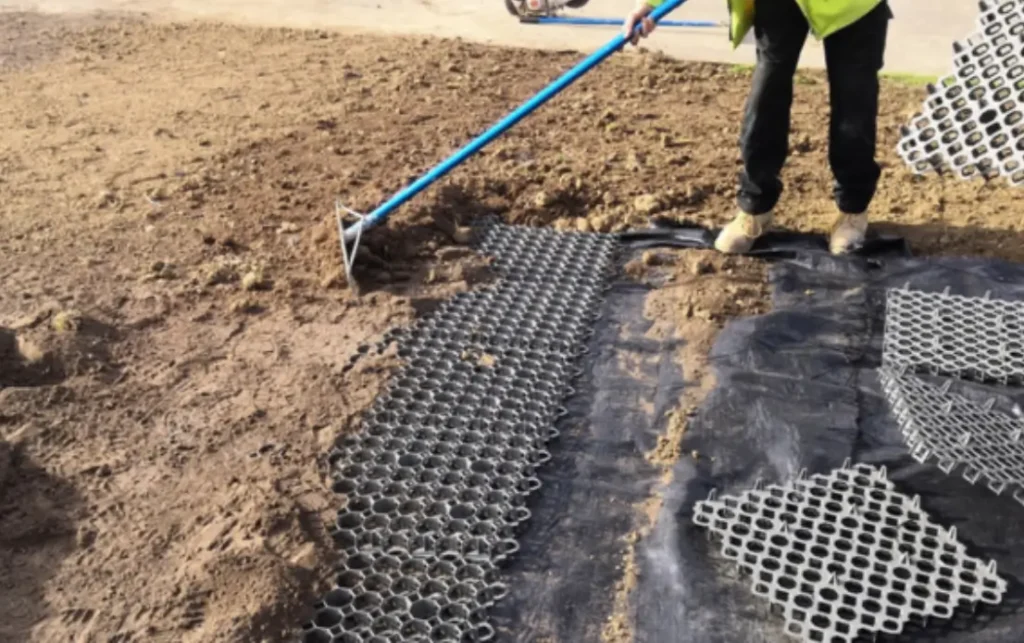
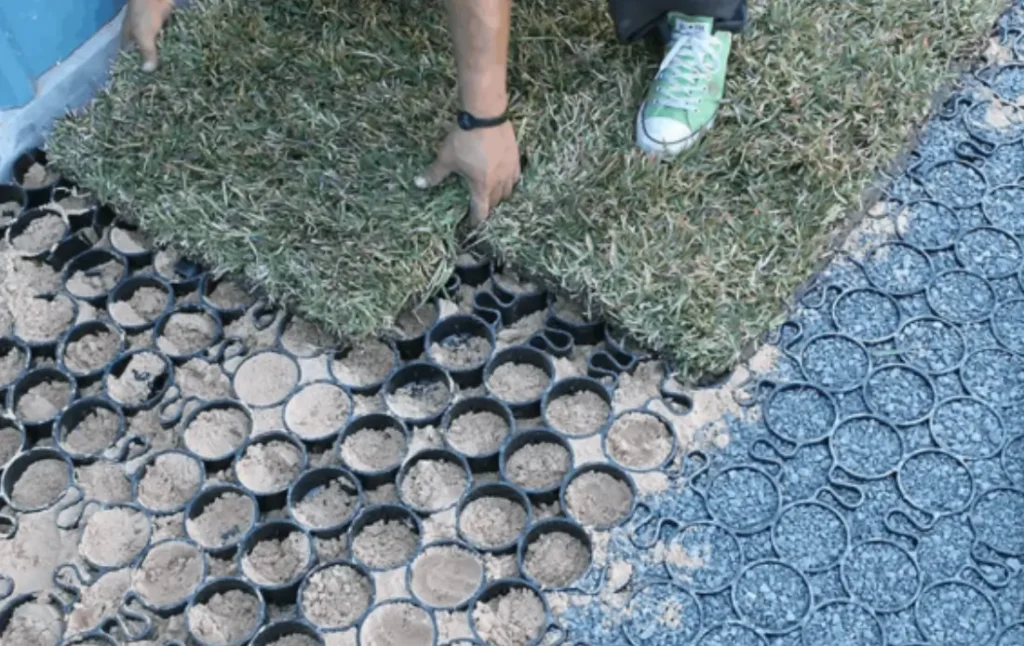
Some key features that allows Gravel Grid to perform these roles include:
Grid Design – Permeable Grid pavers constitute a network of cavities or cells connected to one another and filled with soil. By distributing weight uniformly over the surface, these cells aid in minimizing soil compaction and fostering strong grass growth.
Installation – Installing Gravel Grids is not complicated as they can be placed on a prepped sub-base. They frequently have connection points or interlocking mechanisms to guarantee stability and thwart movement. To enable grass growth through the cells resulting in a continuous green surface, the grids are filled with topsoil and seeded.
Load-bearing Capacity – Grass Paver Driveway are designed to sustain different levels of load, depending on the particular use. The thickness and layout of the grids affects their ability to support loads such as vehicles without damaging the grass surface.
Maintenance – Individual grids can be simply replaced in the event of damage without disrupting the entire region.
Material – Plastic Permeable Paver materials provide great durability and resilience to environmental factors such as heat.
Permeability – Permeable Grass Paver are made to be permeable so that water can seep into the soil and reduce runoff. The grids’ open-cell design allows for effective drainage, lowering the chance of water pooling and flooding. This feature aids in groundwater replenishment and proper storm water management.
Uses of Grass Grids
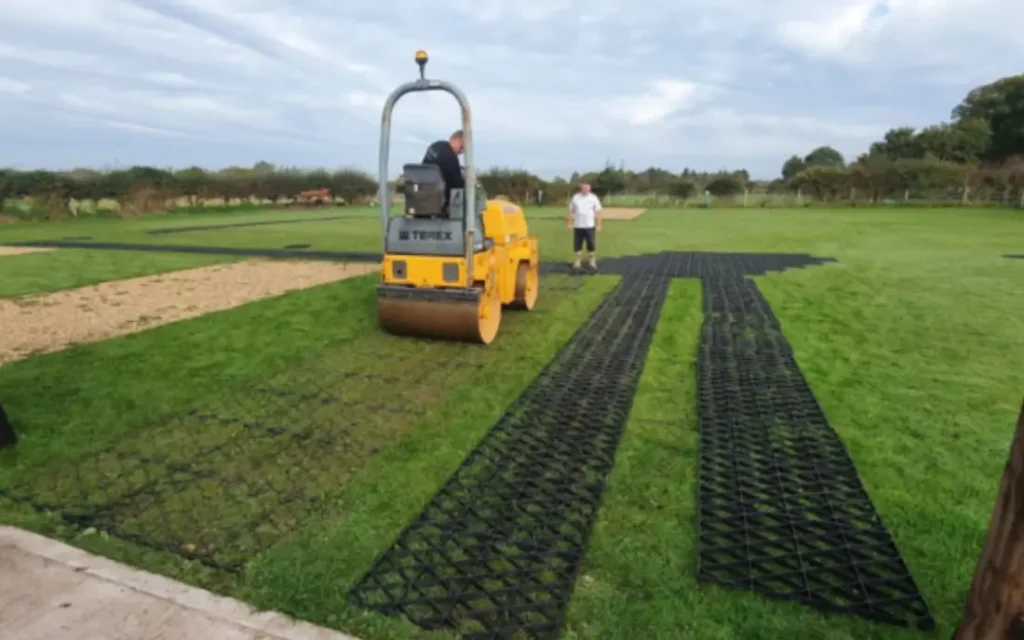
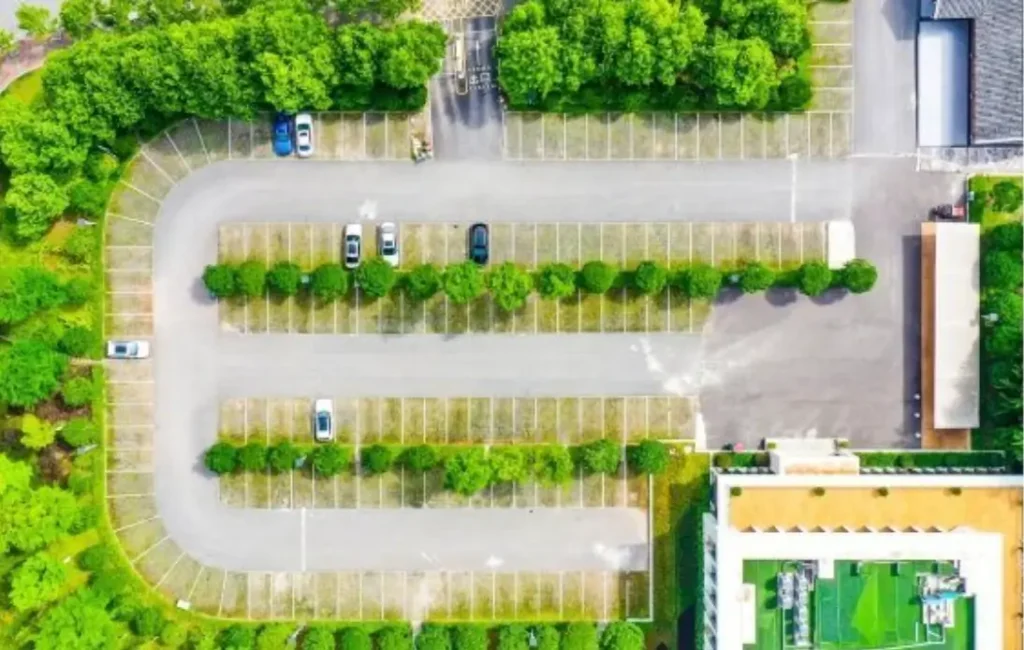
Gravel Grid have several applications some of which are mentioned below:
Car Parking : They present a useful and beautiful alternative for parking spaces allowing growth of grass through the cells. Additionally, they provide a stable surface capable of sustaining vehicular weight while giving a natural appearance. Compared to paved parking lots, grass grids reduce storm water runoff, encouraging infiltration and lowering the heat island effect.
Access Roads and Driveways: Gravel Grid are utilized for access roads and residential driveways to combine greenery and load-bearing capability. They offer a strong surface that can withstand vehicle traffic while enabling grass growth for aesthetic quality.
Erosion Control: These fixtures are useful in the regulation of erosion on areas such as embankments and slope. The grids’ interconnecting cells maintain soil stability, reducing erosion and creating an environment conducive for grass growth.
Golf Course: Using Plastic Permeable Paver here supports the pressure on the grass from foot activity or maintenance machinery. They also allow mowing activity, irrigation and other tasks preventing surface compaction and lawn damage.
Gardening and Landscaping: Grass grids can be used in the design of aesthetic spaces like terraces, seating areas, or garden walkways. They provide a strong, permeable surface while retaining the beauty and advantages of grass.
Sports Fields: Grass Protection mesh are used to strengthen the turf, offering a sturdy playing surface for sports fields. They aid in player weight distribution, lessening compaction thus causing less harm.
Advantages of Grass Grids
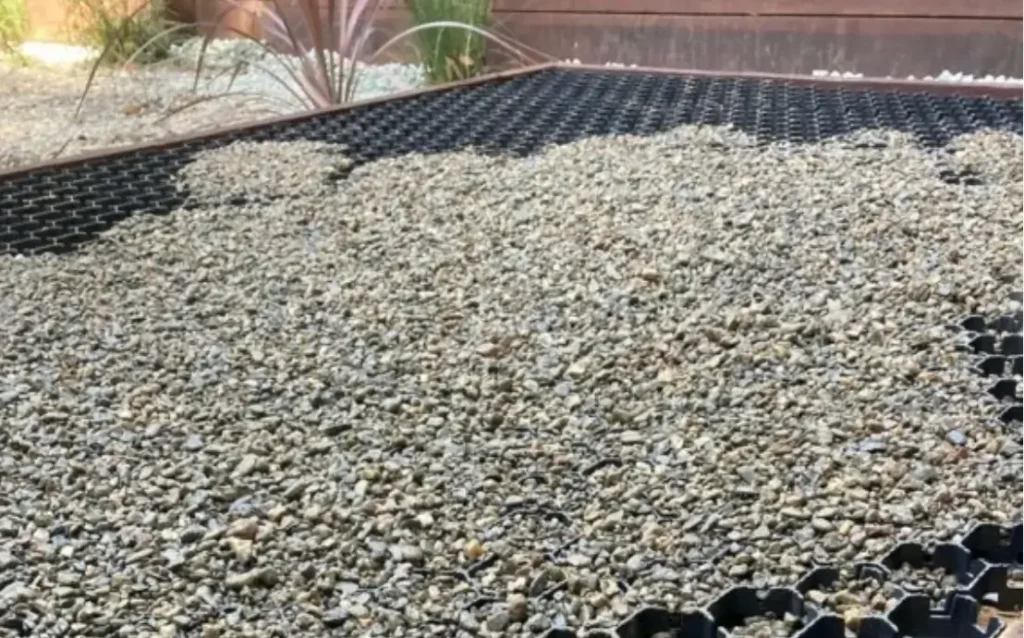
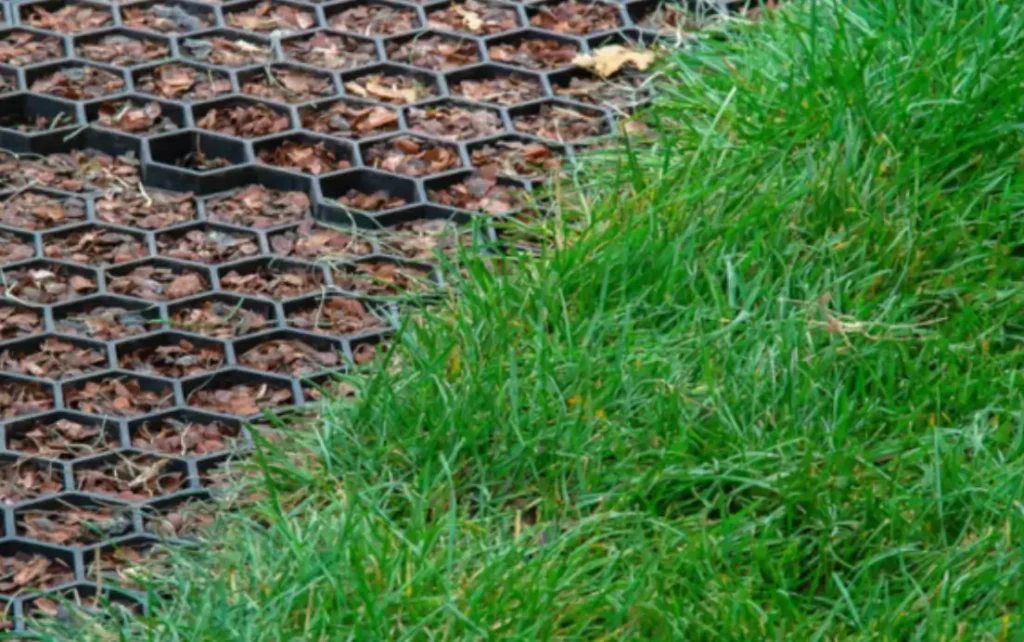
The use of grass grids offers you many benefits as identified below:
Aesthetics – Grass grids are an aesthetic alternative for conventional paved surfaces with the grass presence easily merging with the surrounding landscape. This maintains a natural aspect when used in parks and gardens.
Cost-effective – Compared to conventional paving techniques, grass grids are a more affordable option requiring less digging and materials. They also have low installation and maintenance costs as well as saving costs associated with storm water management.
Simple Installation – Installing grass grids doesn’t require much in specialized tools or skill set allowing fast and effective set-up. Simple maintenance operations are also required like mowing, debris removal, and checking for damage.
Eco-Friendly Solution – Grass grids are an environmentally friendly solution since they protect green spaces and encourage biodiversity. They also lessen the heat island effect common with paved surfaces and promote water efficiency.
Support for Grass Growth
They aid in the growth of turf or grass with their open-cell design encouraging growth through the spaces. This way, the roots connect with the soil creating a sturdy, wholesome growth cover.
Load-bearing Capacity – These features can carry the weight of equipment, vehicles and people with minimal sinking or rutting without damaging underlying grass.
Longevity and Durability – The strength and durability of grass grids makes them immune to chemical and UV degradation as wells as weathering.
Drainage Support – The open-cell structure of grass grids permits water to permeate the soil facilitating efficient storm water management. The cell structure lowers the possibility of surface floods by reducing the effect of surface runoff in heavy rainfalls.
Soil Stabilization – Grass grids effectively stabilize the soil, reducing erosion and fostering wholesome growth of grass. The interconnected cells evenly distribute the load, lessening soil compaction and the chance of surface damage.
Versatility – Grass grids can be applied in a variety of ways and serve aesthetic or practical purpose while utilizing different fill materials. They can be made to meet different project needs in various sizes and configurations.
Installation of Grass Grids
For grass grid installations to be successful and enduring, several crucial procedures must be taken. A general description of the installation procedure is given below:
Step 1: Site Preparation
This involves inspection of the area and removal of debris such as plants and rocks. This step also ensures the terrain is adequately graded to allow for effective drainage.
Step 2: Excavation
In order to accommodate the grass grids and the underlying layers excavation may be required to a certain depth. The projected load-bearing capability, soil conditions, and project needs are factors that will influence the depth.
Step 3: Sub-base Preparation
A stable and well compacted sub-base entails laying down a layer aggregate and compacting. The sub-base aids in load distribution offering a stable basis for the grids.
Step 4: Installation of a Geotextile Fabric
This is installed over the compacted sub-base and is dependent on the soil conditions and project requirements. The geotextile serves as a separator, ensuring appropriate water drainage while preventing the mixing of the soil and sub-base.
Step 5: Installation of Grass Grids
Executed by placing the grass grids on the ready sub-base from one end, orienting and interlocking the grids. When needed, cutting the grids may be necessary to suit a specified area.
One Stop Geosynthetics Manufactry Leader
Lianyi is a trusted geosynthetic manufacturer for over 10 years with our expertise and vast knowledge in the industry.
